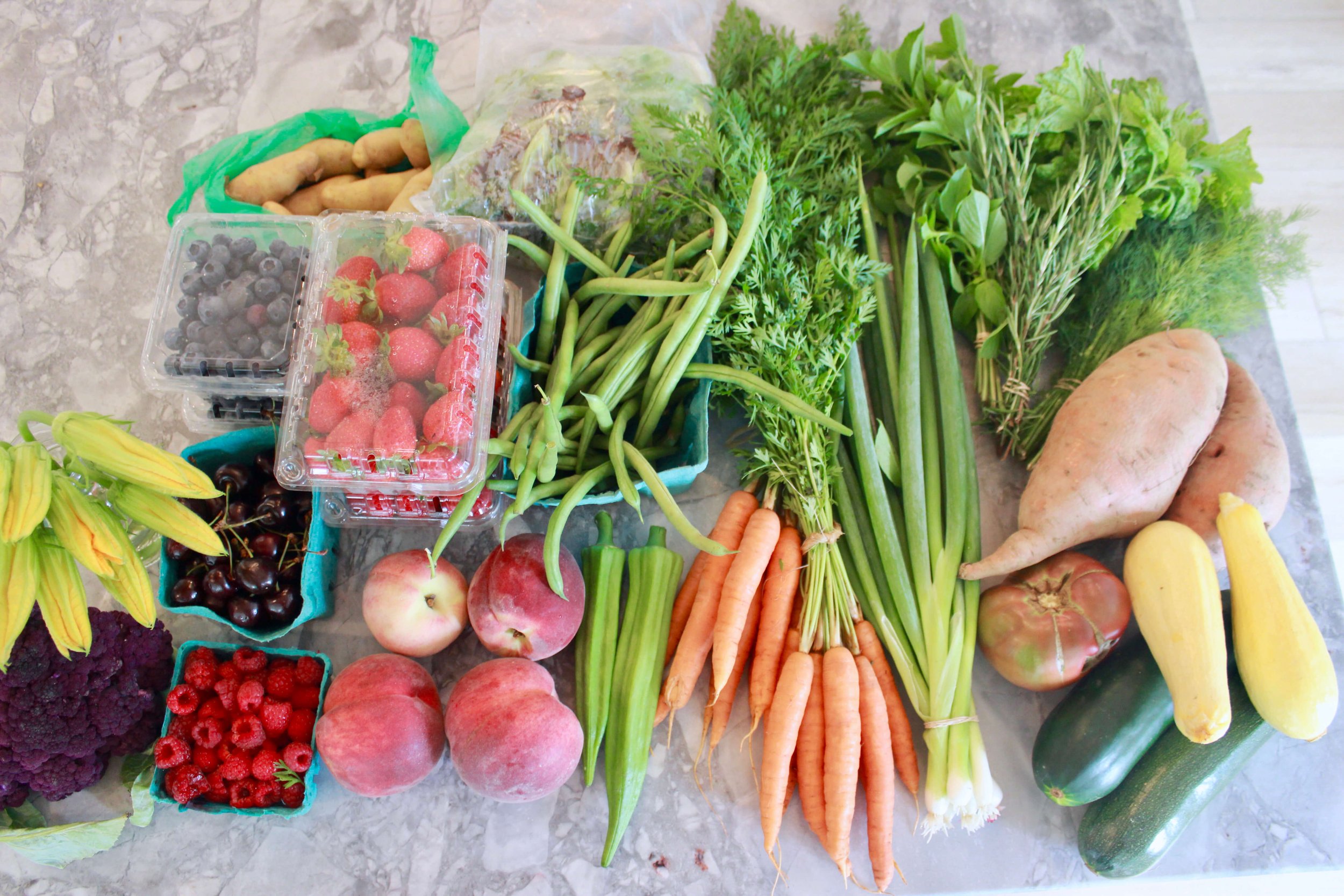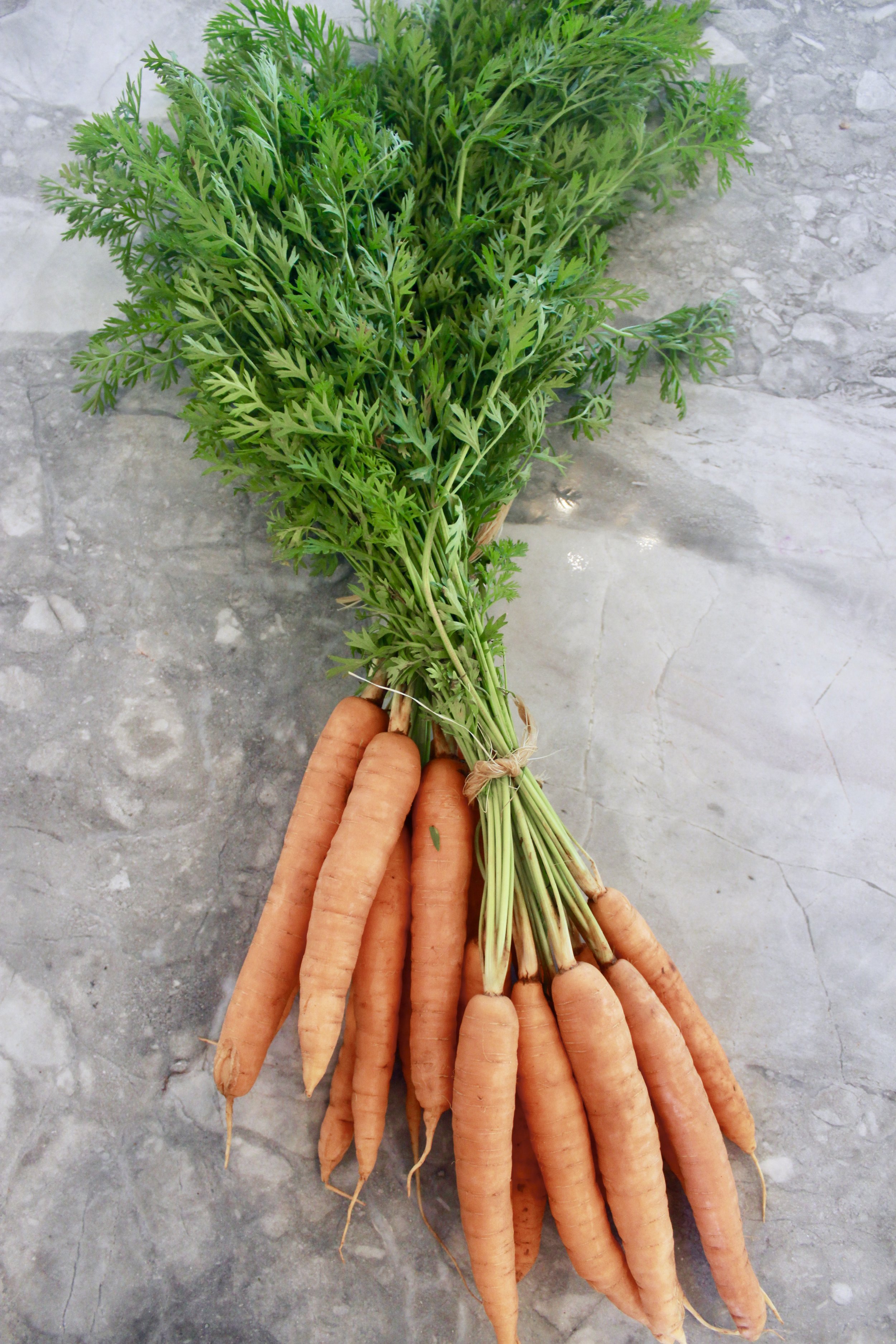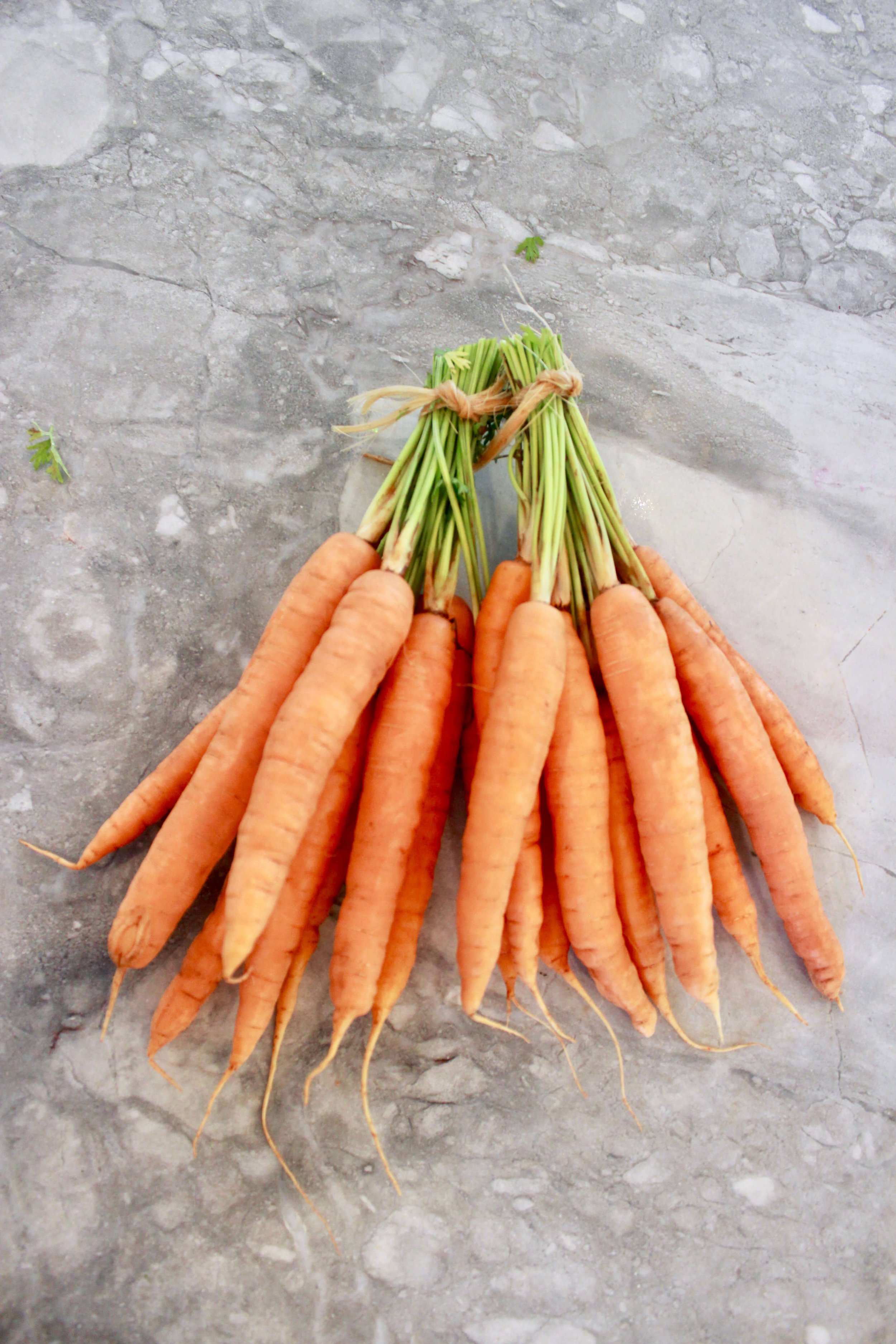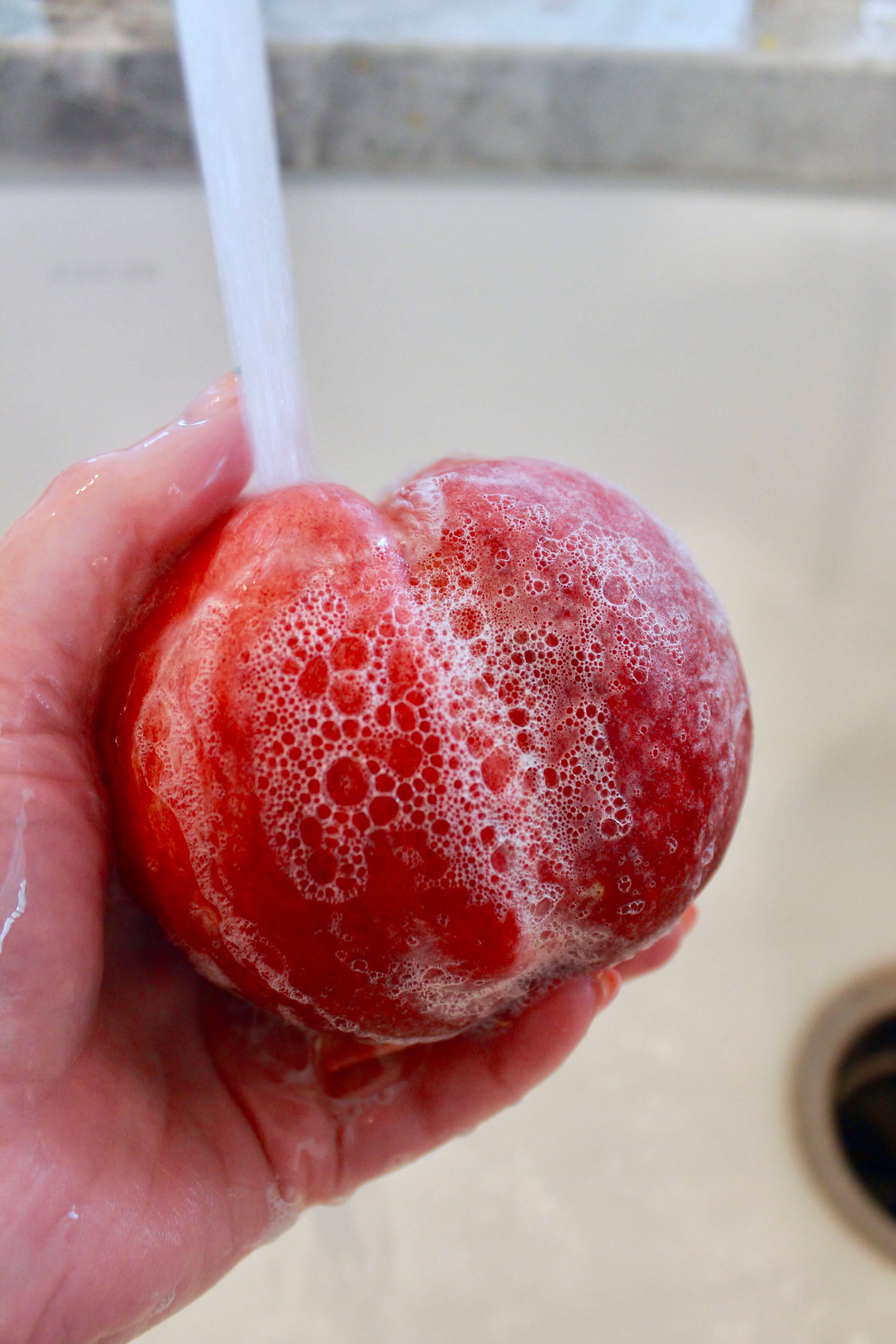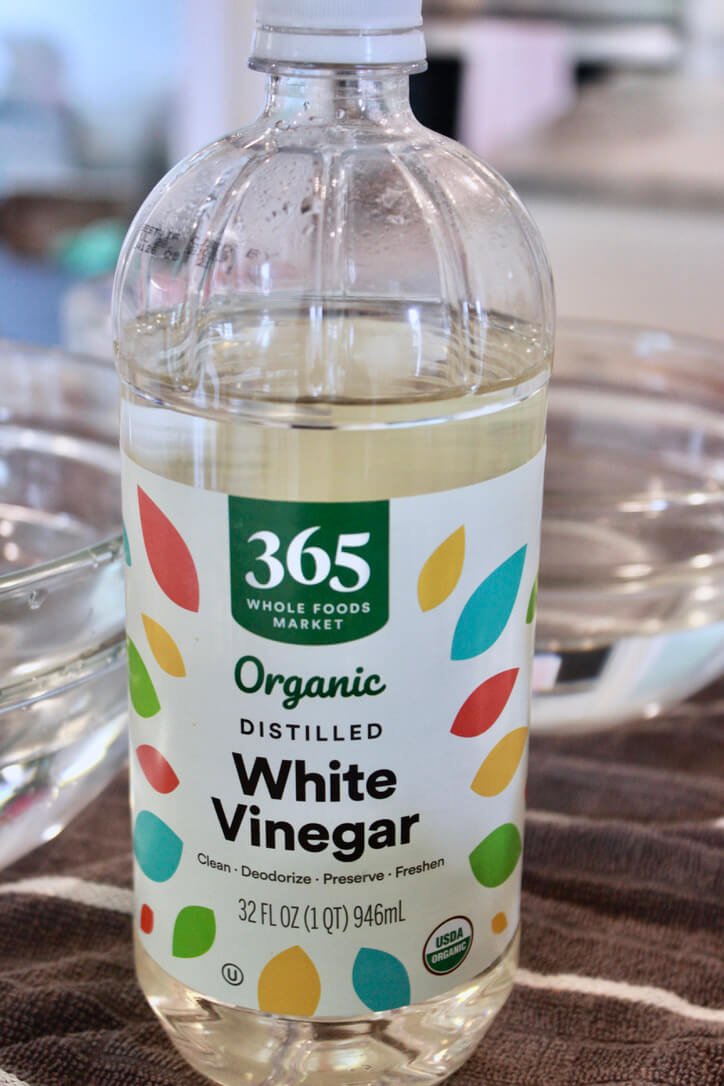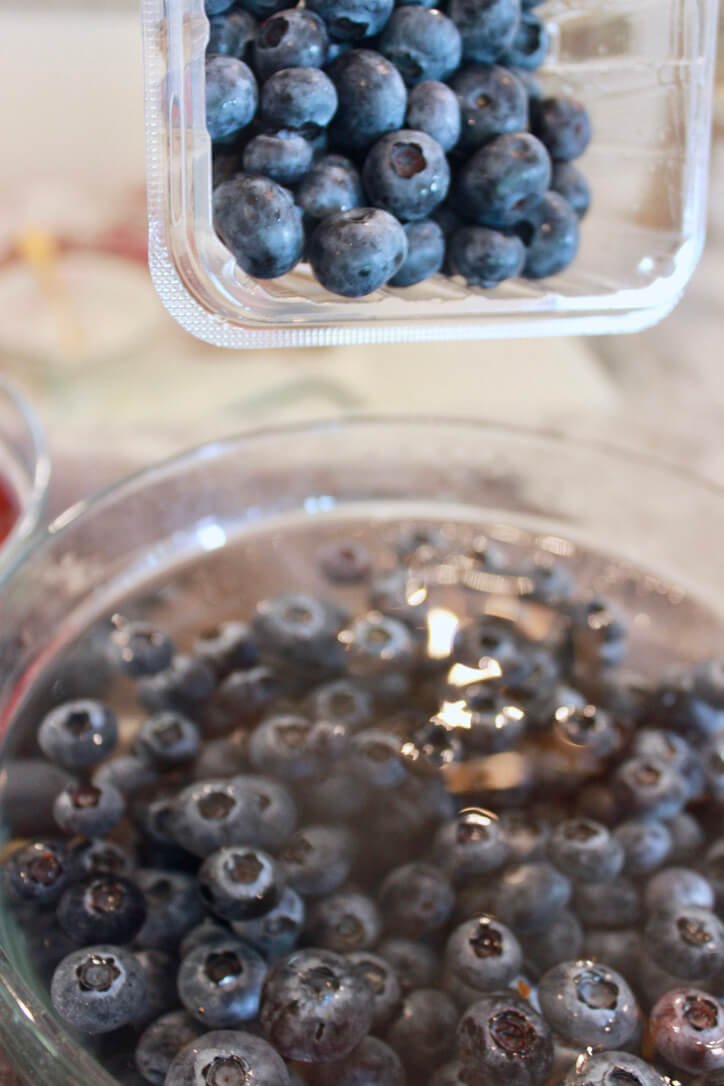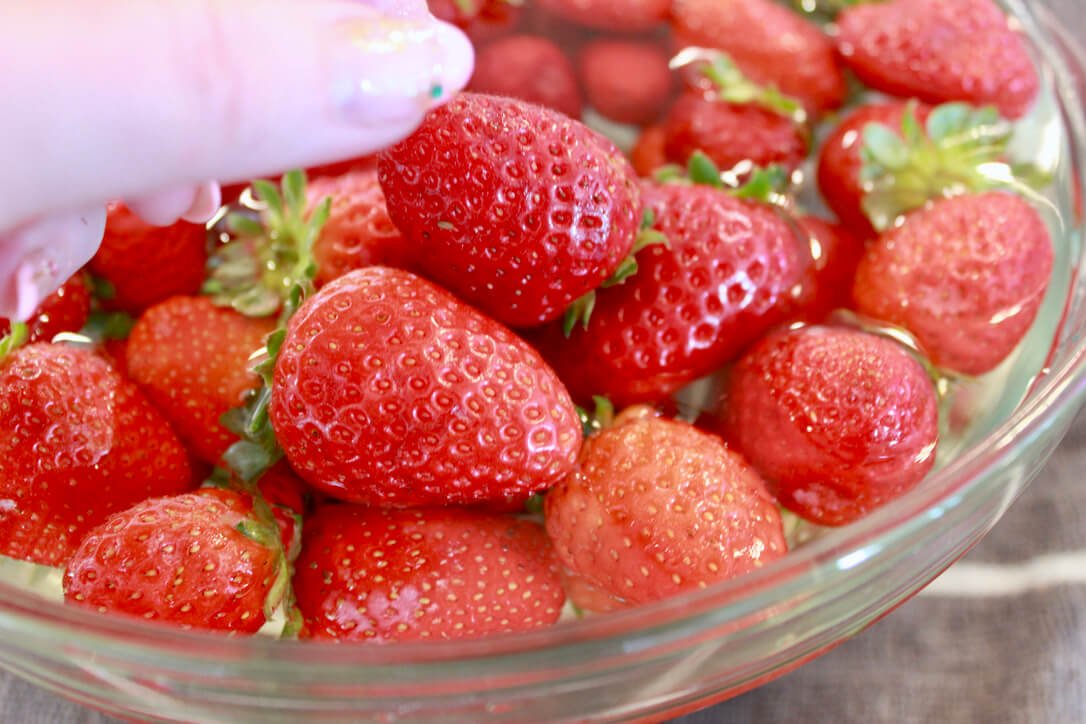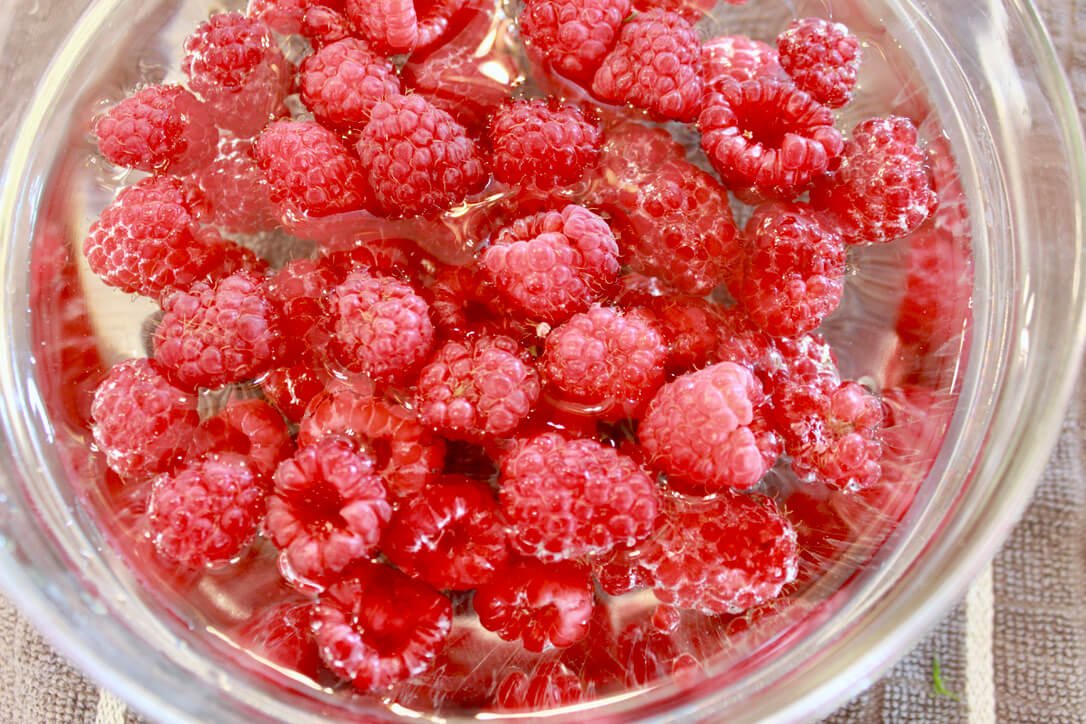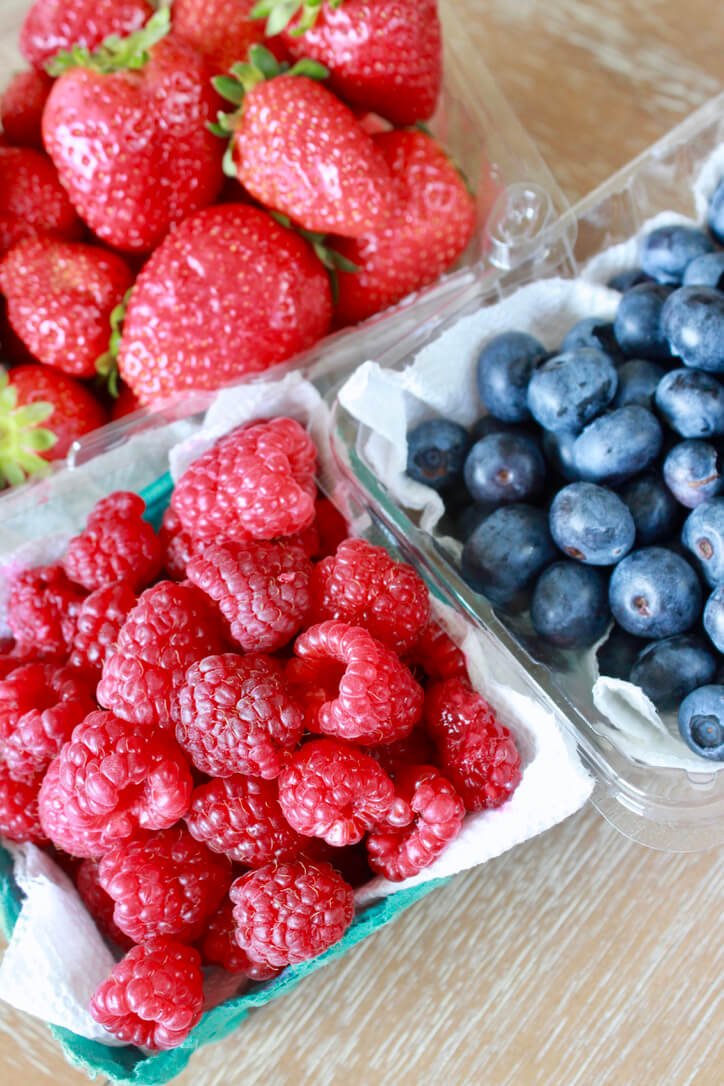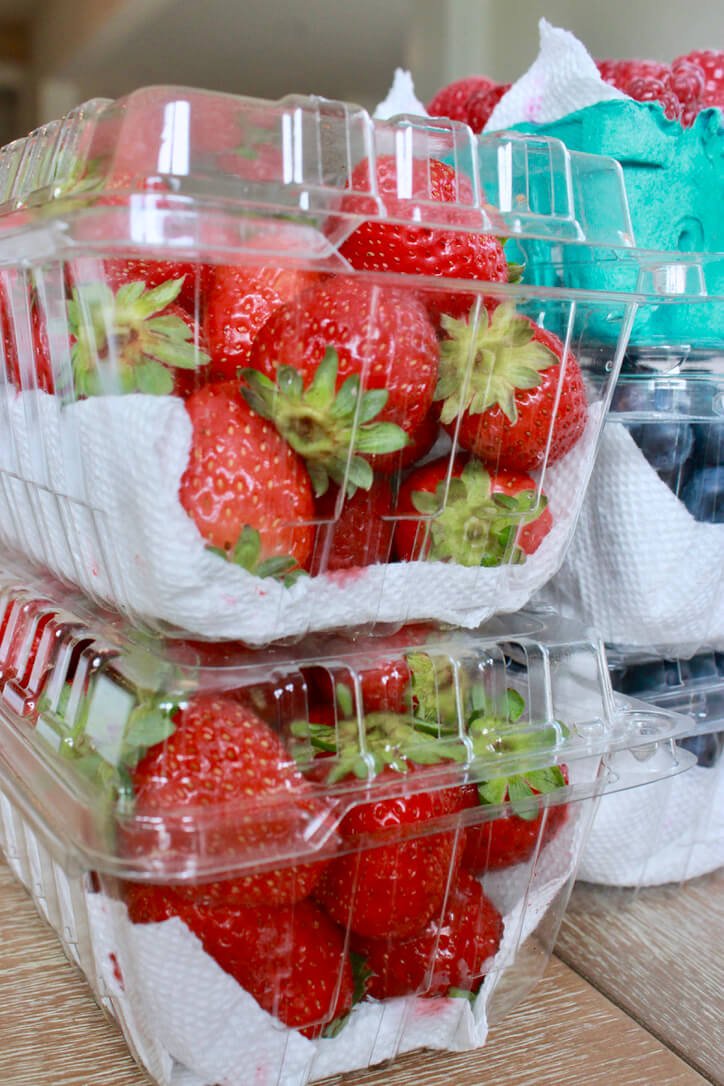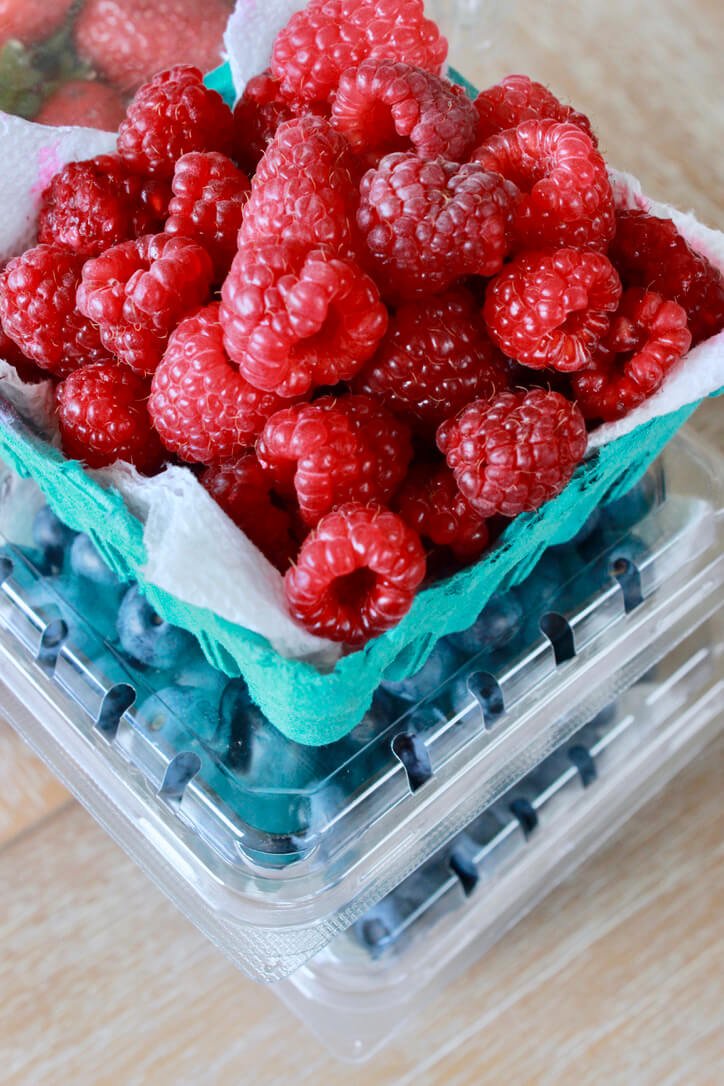How to Make Fresh Produce Last Longer
For the last few years, Kyle and I have been on the hunt for raw milk. It’s not easy to find milk that hasn’t been intervened by the government! It’s a lot easier to access now than it was ten years ago (there’s websites now that can help you), so we were delighted to find raw milk at the farmer’s market we went to a few weeks ago. Every state has different laws around it; in Virginia, you can have raw milk if you own your own cow, so farmer’s established herd shares, which are like the cow’s milk version of a CSA program. So, Kyle set up our stake in the herd share during our farmer’s market visit a few weekends ago, and finally, that sweet, sweet milk is ours (more to come in a different post about why I, a full grown adult no longer pressured by the dairy lobby that I need calcium from milk, decided to include raw milk in my diet).
The kicker, though, is that we have to pick up our share IN PERSON every week at the farmer’s market. I mean, it’s not really that bad, it just feels like a lot of responsibility as someone who has packages that have been waiting to be mailed for 3 months sitting in her mudroom. But we’ve turned our raw milk pickup into a weekly family outing, where we also do much of our weekly grocery shopping. Goldie loves running around and seeing all the dogs (or as she calls them, pups) and I….well…I love shopping. Especially for food.
We’re almost a month into this new routine and I’ve learned a few things:
There’s a huge difference in the quality of fresh food (and flowers) from a farmer’s market and a grocery store.
You can buy garlic, potatoes, and even freshly baked breads and pastries at a really good farmer’s market. Like, truly, the stuff I thought you had to get at the grocery store.
It’s really not much more expensive than buying organic shit at Whole Foods, and yet, see number 1.
Something happens to you when you start shopping at farmer’s markets; it’s like you become more respectful of your food. Suddenly, instead of throwing something out because it’s starting to turn, you throw a brief, albeit profound funeral service before vowing to never lose a berry to rot again!! So, when we decided we were going to do the bulk of our shopping this way, I had to learn quick how to make this shit last. There’s nothing like spending $6 on blueberries and carrying them around in a cardboard box in 97° heat to make you psychotic about eating each and every one before they spoil.
I’ve been a big practitioner of produce prep since I had Goldie and was forced to maximize my time, but this way of prepping my berries and herbs has been a total game changer. Let me walk you through what happens to my groceries when I get home from the farmer’s market.
Prep
The first thing I do when we get home with groceries is unpack everything and lay it out on the counter. I then sort like things together (dry, unrefrigerated things like potatoes and garlic; fruits; vegetables; etc.) to allow me to see what I have.
I take care of the delicate things first. This includes putting my herbs in a glass or jar with water. I don’t put them in the refrigerator, mostly because I just don’t have room. But with herbs this fresh, I’ve managed to get over TWO WEEKS of life from my herbs using this technique! It makes spending $5 on a bundle of basil so much more worth it. I also place any flowers I bought into a vase with water, just to hold them over until I finish everything else.
Squash blossoms and a variety herbs are the first things to get prepped. A little water in a glass and they’re almost like floral arrangements.
Next, I look at how I can reduce the amount of space something takes up in the fridge. For example, these carrots had super long stems and create unnecessary bulk for storing. So, I trimmed off the leaves (you can save them and make them into a pesto or even freeze to make stock) and now they fit much easier in my produce drawer. Use this same idea with excess packaging and toss the plastic bags or containers you might have used to hold things while shopping.
There’s not a lot of prep to do with potatoes until you actually want to use them - they’ll brown and dry out quick if you cut them and don’t keep them submerged in water or use them. So, I just dust them off a little and then move them to the pantry. DO NOT REFRIGERATE POTATOES.
If I have onions, I’ll usually peel and chop one and store it in a baggie so I can pull it out for quick weeknight meals. Same goes for things like broccoli (chop off stems and break into florets), zucchini (clean - see below, then chop), melon or pineapple (chop and store in a tupperware in the fridge), and celery (rinse and chop into stalks and store in a tall tupperware with a couple inches of water). Basically, I prep whatever I can in advance before it goes into the fridge so when it’s time to cook, I can pretty much dump whatever I’m cooking into a pan or on a baking sheet and I’m good to go!
Clean
I’m about to blow your goddamn mind…you ready? ARE YOU SURE?
Before storing in the fridge, I wash my fruits (not berries) and veggies with edible skin with water AND soap.
Did I do it? Is your mind blown?
This usually gags people, but here’s the thing: I use the same soap I use to wash my dishes, and I eat off those. I rinse them completely, so no soap residue is left behind. I don’t think it’s weird that I do use soap to wash apples/peaches/plums/apricots/zucchini; I think it’s weird that you DON’T.
Consider how people shop for a peach. They use their bare fucking hand and start squeezing to find the ripe one. Think about how those fruits get to your grocery stand in the first place. Maybe the shipping truck hits a bump in the road and a stray apple tumbles down onto the flatbed, only to be picked up and placed on the table of apples at your store. And then, someone’s toddler yells “ball” and points at the apple and she is forced to let her kid handle the apple “ball” with her dirty child hands as they peruse the apple section until she can bribe it out her kid’s hand with a cantaloupe instead. Perhaps that same apple was hanging a little too close to the edge when someone bumped the table a little too hard and it fell onto the grocery store floor, only for another person to play good samaritan and put it back on the display, was the one you so BLITHELY UNAWARE of picked up, took home, and only ran a few drops of water over before eating. You have e.coli now…
So yeah, I give my edible-flesh-fruit (not berries or grapes - we’ll get to that next) a proper cleansing with a dye-and-fragrance-free soap. I let them dry completely and then they go in the fridge. This also makes picking a healthy snack super easy, since you can literally grab it and go, knowing your fruit is clean and ready to eat.
Good luck surviving the dysentery you get from not properly cleaning your produce.
If I’m not cleaning my berries with soap and water, what am I doing? Vinegar, bitch. It’s not just for fish and chips anymore. This vinegar-water solution is the key to making some of your most finnicky produce purchases last a solid week or more!
What’s worth noting is the importance of freshness. Now that we’re buying from the farmer’s market, I’m realizing how fresh my produce is compared to even Whole Foods. Everything lasts longer than what I buy at the grocery store. My salad greens don’t wilt or turn brown. My potatoes don’t sprout within a few days. It’s really true that if you eat local, you eat better. So to the extent you can, buy local and fresh. That will help your food last longer. Add this little hack into the mix, and your food will last longer than a Pete Davidson relationship!
This technique of cleaning and preserving berries involves combining water and vinegar, allowing the berries to sit in it for 10 minutes, then rinsing and drying before storing. The acid in the vinegar helps to kill off any bacteria or shit that might otherwise cause mold to grow. And no, you can’t taste it (assuming you rinse it thoroughly).
HOW TO MAKE A VINEGAR FRUIT WASH
4:1 ratio of water to white vinegar (you can use apple cider vinegar, it just gets more expensive.) For every 1 cup of water, add a 1/4 cup of vinegar.
Basically, I fill a bowl large enough to hold whichever berries I’m cleaning and dump a large wine glass amount of vinegar in. I give it a swirl, and then add my berries, always working in single berry batches. I find that delicate berries like raspberries need their own space to not be damaged, so as a general rule, I do separate baths for each fruit.
Let the berries sit for 10-15 minutes, then drain, and rinse really well. When berries are well rinsed, spread them out onto a towel in a single layer and allow them to fully dry before putting them back into the refrigerator in a paper towel-lined container.
You could certainly use a more eco-friendly container, like Stasher bags, but I keep it simple and just reuse the container the berries came in, with a paper towel lining the bottom.
Once they’re clean and dry, I store them in the fridge where they’ll easily last a week, assuming they’re not eaten before then.
And that’s how I get all my produce to last as long as possible, while also maximizing my time spent making meals. You’ll find when your food is prepped and easy to use, it’s so much easier to make healthy meals. You’ll also probably find you stop having as much diarrhea when you properly clean fecal matter off your apples, you disgusting pig.
Are you a soap-and-water washer? What are your best tricks and tips for making food last longer? Let me know in the comments.


